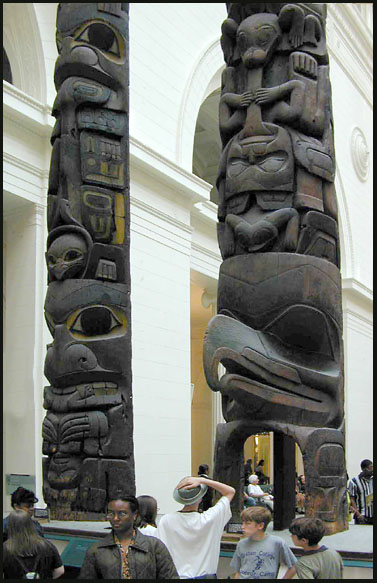
Creatively Teaching
Multicultural
Art
Text and photography by Marvin Bartel , Ed.D., Professor of Art and Art Education , Goshen College Other essays in Art Education by this author can be found at this link . Can I teach art in a ways that makes my students take pride in their own cultural identity while gaining respect and appreciation for the art of other cultures? Those teaching in international schools are likely to have students with more diversity or at least more understanding of cultural diversity than an art teacher in a national school. In North America, I frequently see school displays of projects based on tribal art of Native American Tribes. Some of these are dolls that are felt to have magic powers in their traditional settings. Some are totem pole projects that are copies of Native American Totems. OWNERSHIP ISSUES Is it right to imitate what might be sacred or at least traditional in another culture? How do I teach art in a way that makes my students take pride in their own culture while gaining respect and appreciation for the art and customs of other cultures? Is imitation really flattery? Might there be more authentic ways to be creative while developing appreciation for the art forms and artworks of another culture? What does imitation teach about the role of artists? What should be the role of artists in today’s world? What is critical thinking in art? Shouldn’t we teach that artists interpret and create meaning rather than copy that which is already created? WHAT ARE THE UNDERLYING CONCEPTS? May I suggest some ideas about how we might teach about multicultural attitudes while teaching art with integrity? As a teacher, I must first familiarize myself with the intention of the “other” artist. In the case of the Northwest Native American Totem Pole maker, I must understand the role of the Totem pole as an identity symbol for the family or tribe that it represents. I must have some appreciation for the Totem’s cultural role in helping tell the spiritual stories of the tribe’s interdependence on nature, animals, and their deep respect for their ancestors. If I know the artist’s intentions, I have prepared myself to motivate my students to create art based on similar intentions related to the culture of the students in my class. Many art lesson are started by the teacher employing what is called image flooding. In image flooding the teacher shows many examples of completed work by artists and former students. I do not think much of image flooding because it works by giving many answers to the problem before the students have even considered the problem or worked at their own solution finding skills. Image flooding results in skillfully produced imitations, but does not teach much about problem finding and problem solving. Teachers who depend on image flooding may pride themselves on achieving skillfully slick student artwork, but I wonder whether students are learning how their art can create visual meaning and feeling in response to their own lives.
USING WHAT
WE OWN
CREATIVE COLLABORATION For the art projects each group could work together to develop an assembled sculpture that would represent the important aspects of their particular set of interests, values, or beliefs. Media might be heavy paper or card stock that is cut, folded, and glued into three dimensional forms to represent the symbols. Their colors, sizes, textures, shapes and their juxtapositions would help produce dominance and subordination of various inclusions. Artistically and aesthetically they should strive for unity with interesting variety.
DEVELOP
CRITICAL
THINKING AND CREATIVITY
When the groups complete the artworks, they could be given a writing guide and asked to write a statement or viewer’s guide articulating the work’s intentions. Other class members should be asked to respond without seeing the statement to point out what they first notice and explain why they notice it.
CULTURAL
AND HISTORICAL
CONNECTIONS
Better yet, a group of students does research. They then
write
and present a drama they have written about being members of the
culture.
Their roles include art-makers and art-users in the selected culture.
Art
education research has shown that this method of learning art history
and
multicultural art is one of the favorites among high school
students.
We live in an age of spectator sports and spectator culture. There is too much indiscriminate learning by imitation. By learning to be creators with integrity about ourselves and our own identities, we can better understand, empathize, and respect the honest efforts of those other than ourselves.
--- end of article --- back to top of article Other essays in Art Education by this author can be found at this link . Haida Tribe Information and Images can be found at these links -------------------------- http://www.virtualmuseum.ca/English/index_flash.html An essay on the life of the Haida Tribe Some images and infomation about the making of Haida Totems. This is a Washington State University site.
Online
resources
about the Haida Tribe
Links to other essays by Marvin Bartel
They are located at: http://www.iteachnet.org/ Permission to copy for non-profit classroom use may be secured by e-mail from the author. Contact |

